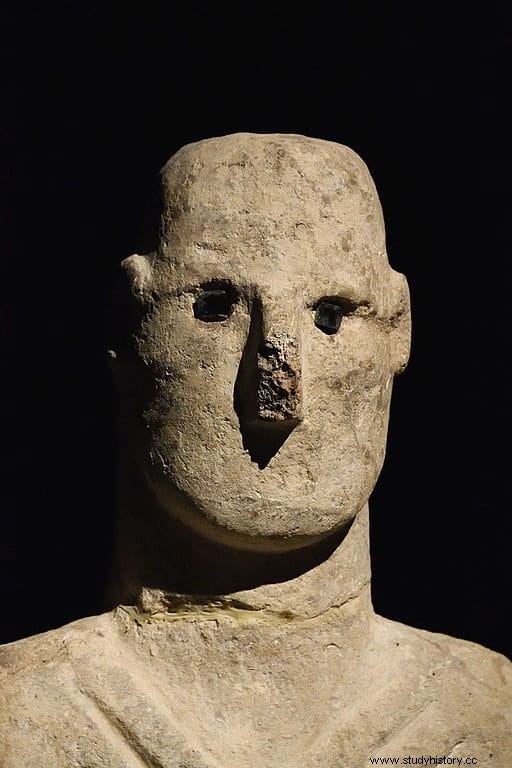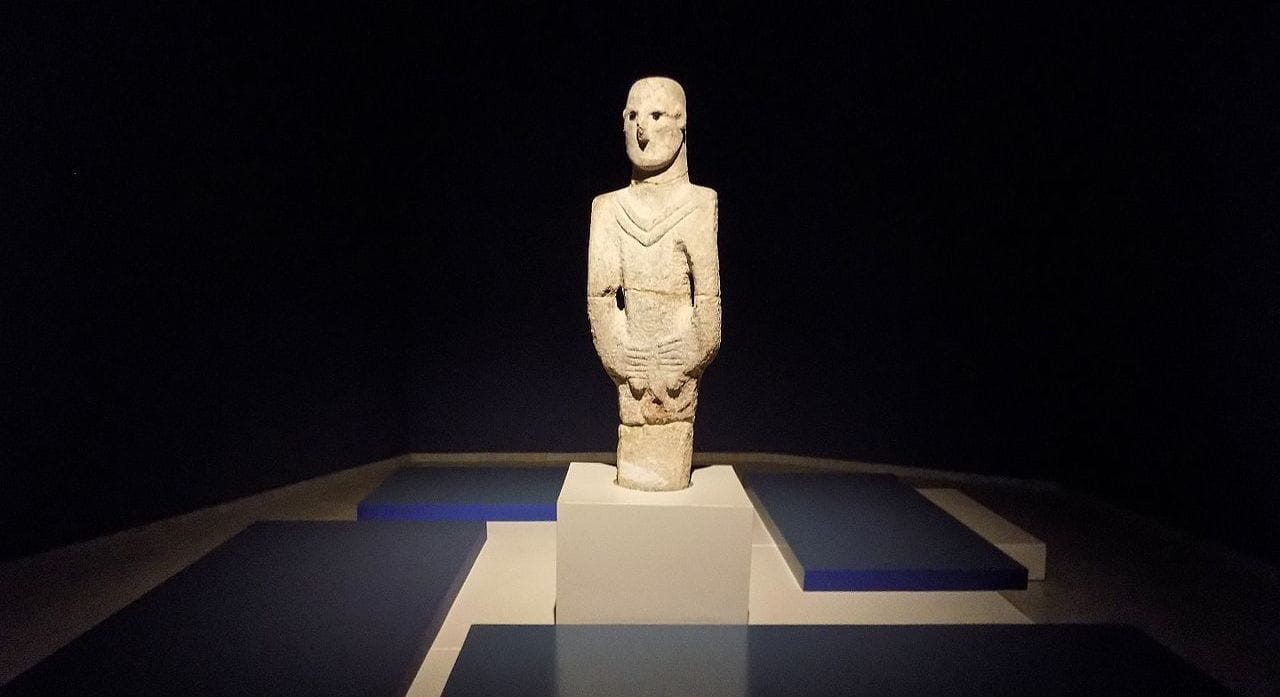In the article that we dedicated to the prehistoric statues of Ain Ghazal, we said that they were 10,000 years old, since they have been dated between 7,200 and 6,500 BC. But even so, they are not the oldest anthropomorphic statues of almost natural dimensions, since that honor goes to the so-called Man of Urfa.
This sculpture, which is also known as Balıklıgöl giant from the place where it was found in 1993 in the southeast of what is now Turkey, near the town of Sanliurfa (ancient Edessa), it is dated to around 9000 BC, in the pre-ceramic Neolithic period.
It was found during road construction works in the Yeni Mahalle district, north of Balıklıgöl, although the exact location of the find was unfortunately not recorded. At the time of discovery it was broken into four pieces, although it is not clear if it was due to construction work or if it was already in that state.

It is contemporary with Göbekli Tepe, whose site is also very close to Sanliurfa, about 15 kilometers northeast of the city and only 10 from the site of the statue's discovery, and with whose culture experts believe it is related. In fact, the site in which it was found was largely destroyed, but it is known to have a small T-shaped pillar similar to those in Layer II of Göbekli Tepe.
It is nearly life-size as it stands 1.90 meters tall, is made of light-colored sandstone, and depicts a person standing upright with hands clasped holding or covering something (which some believe to be his own attributes). The statue is cut just below the hands, so the legs and feet are not represented, resting on an uncarved block of stone that was originally buried and served to keep it standing.

The face has two deep cavities in which black obsidian stones were embedded to simulate the eyes, and an accentuated nose. It appears to have no mouth, although some believe there are remains of what appears to be an open mouth showing sharp teeth. A kind of double V-shaped necklace hangs from his neck (a motif similar to that found in other sites such as Göbekli Tepe), while his arms are slightly separated from the body.
It is unknown if the statue represents a deity, a priest or a king, or has some other meaning. Some heads similar to those of the Urfa Man have been found at Göbekli Tepe, which were probably part of similar statues.
In these cases the heads seem to have been intentionally cut from the sculptures, and deposited next to the pillars. They seem to have formed part of a complex hierarchical system of imagery directly related to the functions of the circular enclosures.

On display at the Sanliurfa Archaeological Museum, Urfa Man is considered the oldest large-scale naturalistic human sculpture found so far. Smaller sculptures, only a few centimeters high, but much older, have been found in different places in Europe, such as the Lion Man of Ulm (dated to around 40,000 BC), the Venus of Dolni Věstonice (around 30,000 BC), the Venus of Willendorf (around 25,000 BC) or the Venus of Brassempouy (around 25,000 BC).
